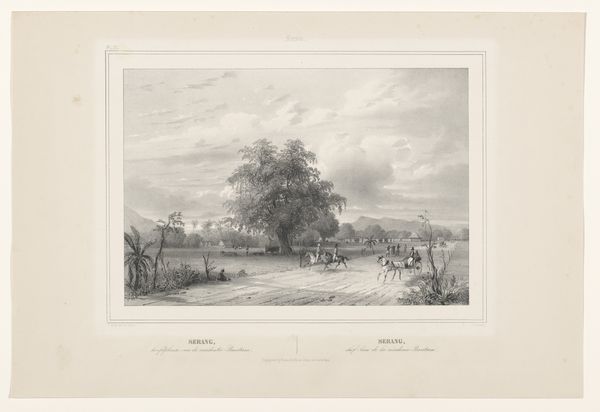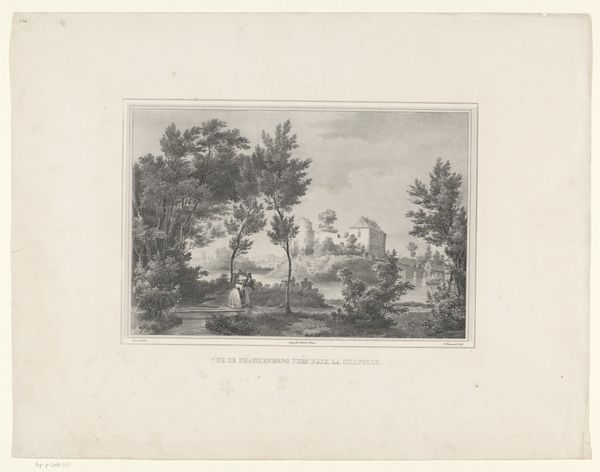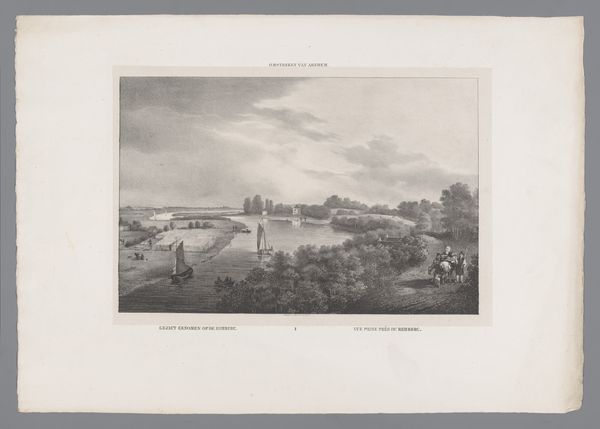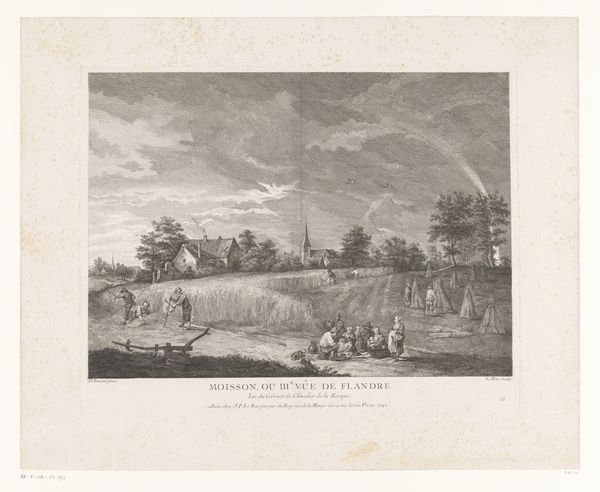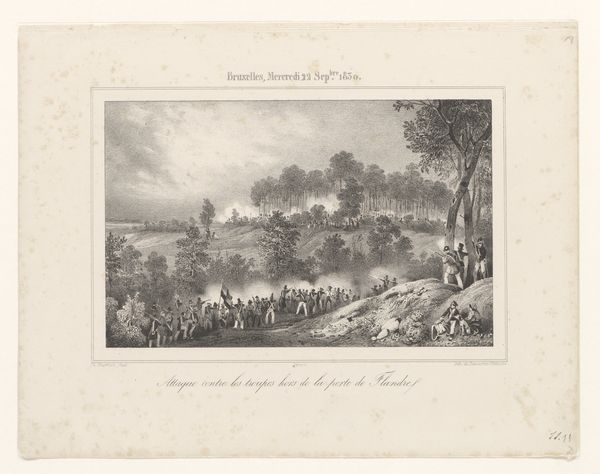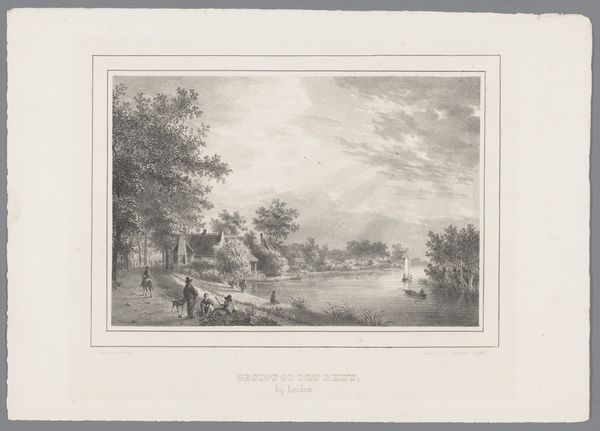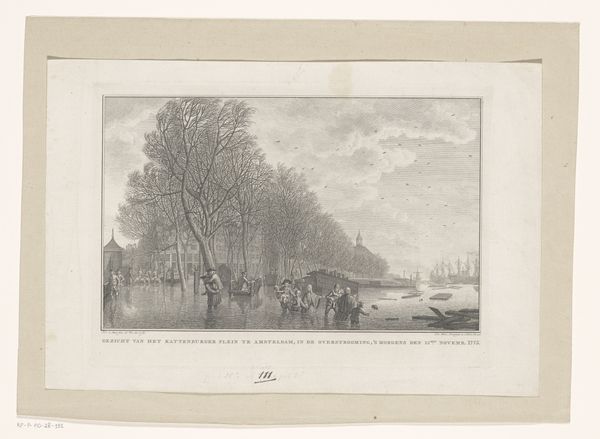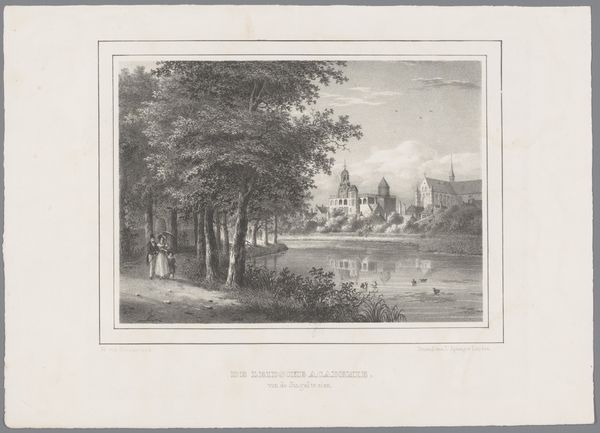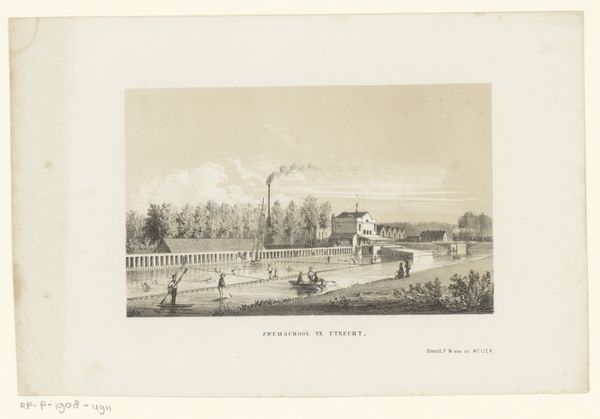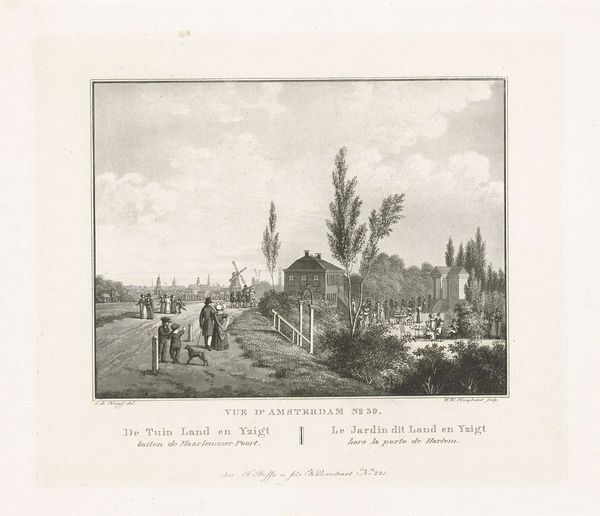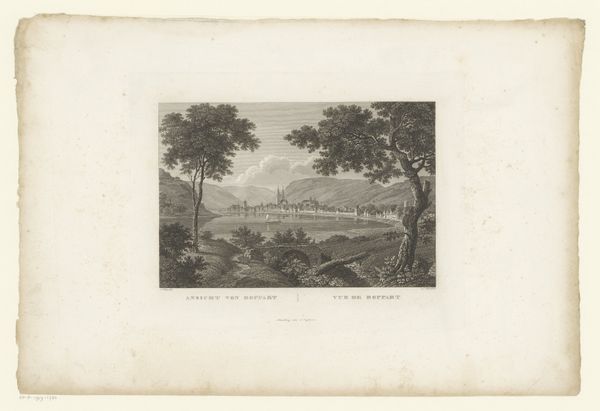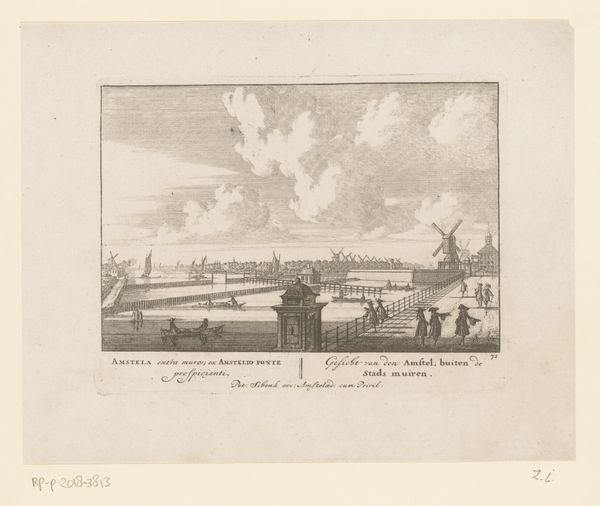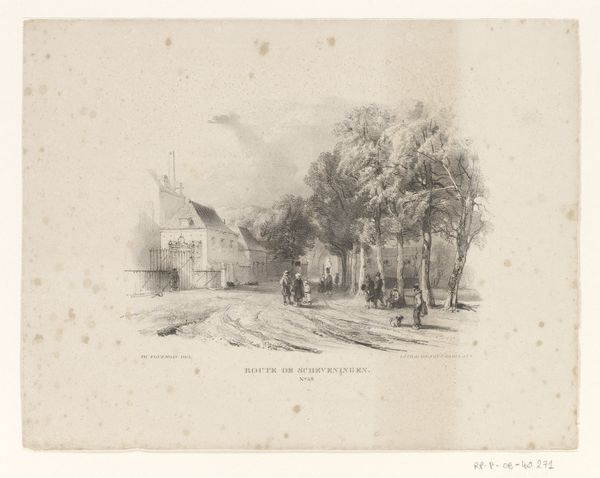
drawing, print, pencil
#
drawing
#
light pencil work
# print
#
landscape
#
pencil
#
19th century
#
line
#
history-painting
Dimensions: height 250 mm, width 363 mm
Copyright: Rijks Museum: Open Domain
Curator: Paulus Lauters crafted this print around 1841 to 1842. The title is “Plundering van Mechelen door de Spaanse troepen,” held here at the Rijksmuseum. It depicts the sack of Mechelen by Spanish troops. Editor: It strikes me as incredibly subdued for such a violent subject. The monochrome pencil work lends a dreamlike quality, distancing the viewer from the supposed horror. Curator: Indeed, the medium choice is quite fascinating when considering the historical context. Mechelen's plundering was a pivotal event with profound consequences for collective memory. The line style lends itself to a kind of historical register. Editor: The composition, too, adds to this feeling. There is this large tree that is in the foreground, which sort of splits the figures into a separate group, that does suggest this may be occurring in our memory. Curator: Trees often act as symbols in this time period as metaphors, frequently representing life, growth, interconnectedness, or shelter. What kind of psychological role might that tree play in the way this violent episode of history gets remembered? Editor: It may be a shelter, which actually might make some of the details in the landscape get lost a little. The eye gets a little mixed up with where it is headed due to how softly these lines are in the back. This adds this visual haziness of recollection, if you will. Curator: Do you feel like that style creates this particular affect around the painting? That maybe viewers may not notice things in their historical memory? Editor: Perhaps that blurring reinforces that events are mutable, based on the subjectivity and perspective with which we process it, like some fading trauma. Curator: I can't help but wonder if this lighter hand, using just a light pencil work as a medium, suggests a collective effort to distance or even somewhat repress this brutal memory, almost as a kind of self-preservation. Editor: It’s intriguing how Lauters utilizes such subtle formal techniques to address a very loaded historical subject. I have an enhanced understanding now that our memory creates these unique, personal effects. Curator: Me too, I find it curious how symbols interact with different cultural memories and can often shape it too. It helps us dive into the artwork's multiple historical angles, too.
Comments
No comments
Be the first to comment and join the conversation on the ultimate creative platform.
